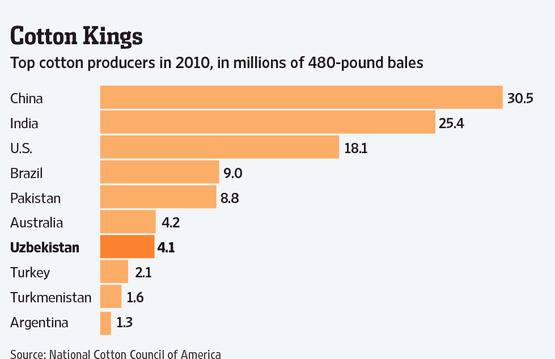|
Frank Leung, the owner of a Hong Kong-based women¡¯s footwear company, has flown to places he never imagined he would visit this autumn. The owner of New Wing Footwear has been to Dhaka and Addis Ababa, looking for alternative production bases to his factory in Dongguan in southern China. But despite searching far and wide, he has been disappointed. The pressure to move is clear and growing. Labour costs in China have risen 15-20 per cent annually over the past couple of years, squeezing margins and creating increasingly testing times for Guangdong, the engine room of Chinese manufacturing. The rising costs ¨C along with the rise in the renminbi ¨C have forced Mr Leung to reduce headcount in Dongguan from 8,000 three years ago to 3,000 today. The wages in Bangladesh, he reports, are about 20 to 30 per cent of those in China. Workers also work 48 hour weeks against the legislated norm of 40 hours in China. The government is offering a 10 year tax holiday. But instead of sounding ebullient, Mr Leung is shell-shocked. ¡°They have crazy traffic congestion and everyone uses a generator in factories (because the power supply is erratic),¡± he says. ¡°The logistics make it very hard to work efficiently¡±. A couple of weeks after his trip to Dhaka, Mr Leung flew to Addis Ababa. Wages were even lower than those in Bangladesh but he could not find the supporting industries, such as manufacturers of shoe soles and cardboard. ¡°Ethiopia has less congestion but it is in the middle of nowhere,¡± he says. India¡¯s oppressive poverty put him off altogether after a visit to Chennai. Now Mr Leung is uncertain whether he will move production from China after all. The climate for manufacturers in Guangdong has prompted many to move to countries in south and south-east Asia. Last week, Gavekal Dragonomics, the research firm, forecast that export growth in China would slow to just 9 per cent next year. Deduct the price increases Chinese manufacturers have passed through to consumers in the west this year, and export volumes rose by only 12 per cent in the first three quarters of this year. Many factory owners, such as David Liu, whose company makes handbags, have looked into moving to countries like Vietnam but elected to stay in Dongguan because supplier networks and worker productivity are better. Mr Liu made several trips to Hunan in central China to see if a factory there would be viable. Again, the distance from support industries and tool-makers scuppered the plan. He has elected instead to work harder at retaining older skilled workers in Dongguan by, for instance, giving married couples their own private rooms and installing air-conditioners for them. The norm is for workers to live in dormitories of six to eight people. Mr Liu says his profit margins have dropped from as high as 10 per cent to as low as 3 per cent, but he has passed price increases of 8 per cent annually to retailers in Europe on stylish hand-bags, which retail for €300-€400. Mr Liu is the rule, not the exception. The unit price of Chinese exports to the EU rose by 10 per cent between January and August. This increase was marginally higher than Turkey¡¯s but well below those of Mexico (17 per cent) and India (23 per cent), according to Gavekal. None the less, Beijing¡¯s decision to double wages for factory workers by increasing the minimum wage every year over the next few years will encourage factories to migrate from China. Some companies have opted to keep bases in China as well as abroad. Texhong Textile opened yarn factories in Vietnam in three stages between 2007 and this year, when it added another 2,000 jobs there, according to Charles Hui, chief financial officer of the Hong Kong-listed company. Wages in Vietnam are the equivalent of Rmb1,200 a month compared to Rmb2,000 in China. And the new Vietnamese factories are more highly automated and require fewer workers. Texhong now employs 4,000 workers in Vietnam as well as 10,000 in China. More than three-quarters of the company¡¯s production is sold to China, one rerason it keeps factories there. In addition, says Mr Hui, Chinese-owned companies are typically reluctant to relocate because they are ¡°not familiar with managing workers who do not have the same culture¡±. Gavekal found that even in industries as labour intensive as textiles, garments and toys, where the headlines suggest factories are fleeing to south-east Asia, China¡¯s manufacturers have raised prices by 10 to 20 per cent this year, ¡°indicating they have gained some pricing power¡±. Dong Tao, an economist with Credit Suisse, says the reason is simple: ¡°There is no developing country that can match half the efficiency China offers¡±. China¡¯s combination of a huge workforce with higher productivity and far superior ports and highways compared with other developing countries makes it hard to find alternatives. ¡°When China grows out of this, there will not be another China,¡± he says. |
|
China factories eye cheaper labour overseas
Updated: 2011-11-9 Source: www.ft.com

Recommended News
Photo Gallery
Most Popular



